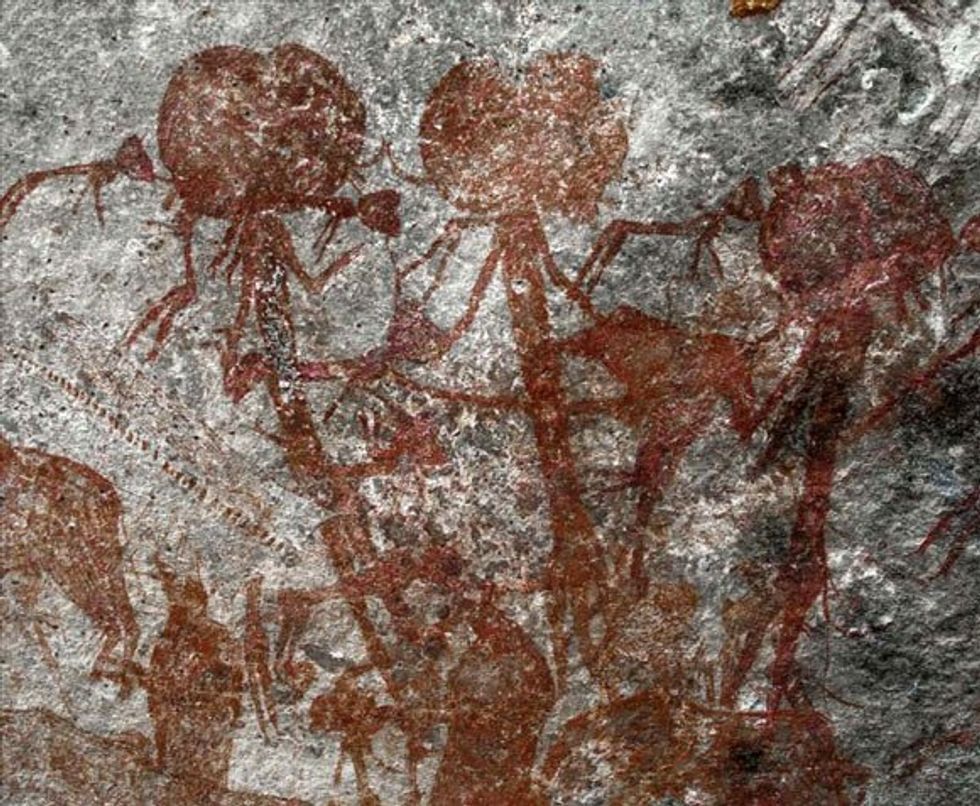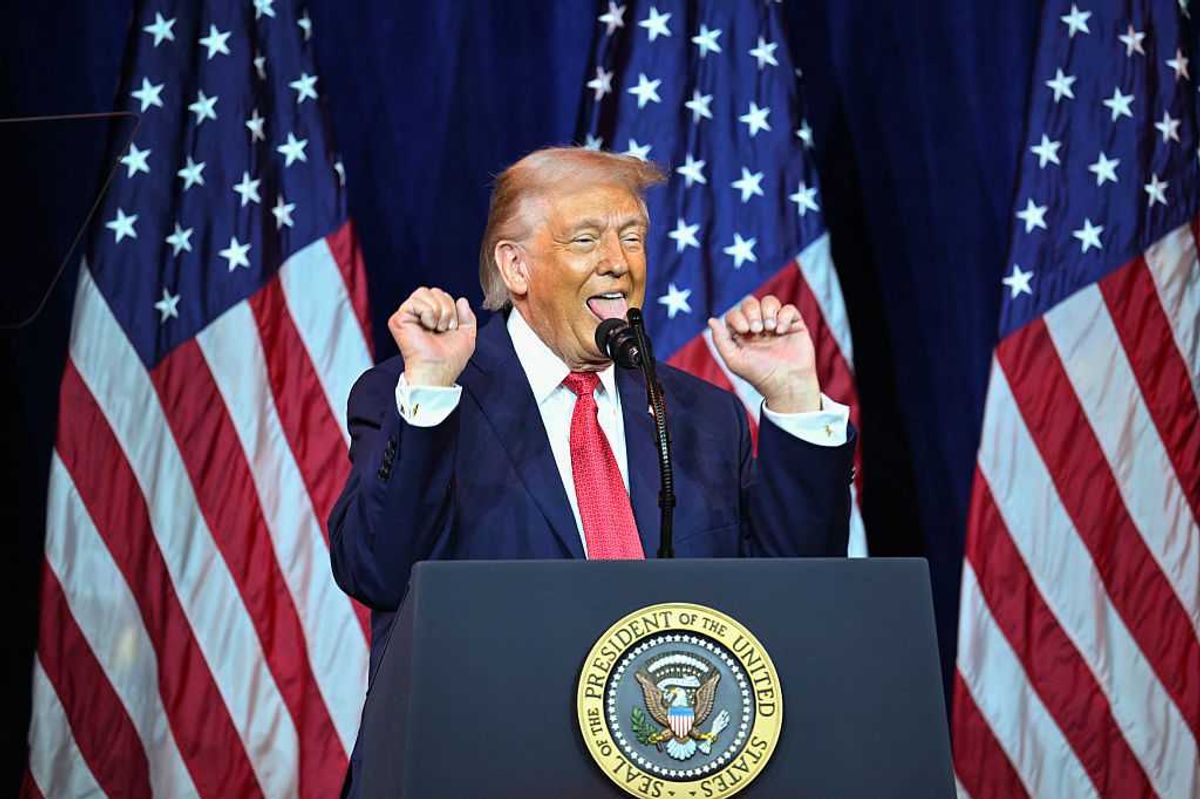Science & Tech
Catherine Shuttleworth
Sep 15, 2025
UFO Sightings and Loud Booms
Cristina Gomez / VideoElephant
In 2018, archaeologists discovered 52 previously undocumented rock shelters in Tanzania, deliberately painted with rock art. Whilst most were destroyed, some were reserved, including one very strange piece.
The site, named Amak'hee 4, was elaborately painted with figurative art - including three mysterious, anthropomorphic figures with extremely oversized heads.
According to archaeologist Maciej Grzelczyk of the Jagiellonian University in Poland, these figures could be a key clue in figuring out what other, similar trios of figures found in other rock art panels might be.
Although difficult to date, Grzelczyk believes Amak'hee 4 is at least a few hundred years old.
Painted almost entirely in red pigment - aside from five figures in white - the weathering on the pigment and absence of domestic animals suggests it dates back to the time of hunter-gatherer societies in the region.

The panel depicts animals that resemble wildebeest, elands, buffalo, and even a giraffe, place human-like figures with large heads.
But one group stands out.
"Particularly noteworthy among the Amak'hee 4 paintings is a scene that centres around three images," Grzelczyk wrote in the paper.
"In this trio, the figures seem to feature stylised buffalo heads. These shapes recall the central dip in the profile of the buffalo head from where the two horns rise and then curve outward away from the head, as well as the downturned ears."
The culture of the Sandawe people, who are descended from those who used to inhabit the region, does not include motifs of buffalo-headed people, so the images may depict something else. But, Grzelczyk adds, buffalo horns do play a significant role in some Sandawe rituals.
Amak'hee 4 is not the only place to have these strange rock paintings. At two different sites in central Tanzania, similar figures are depicted.
In all three sites, the figures are connected by a line across their midsection. And all three have similar arrangements and directions of the hands and arms.
Although Amak'hee 4 does have notable differences: "The figures from Amak'hee 4 are noticeably bigger than those at Kolo, and make this main motif a central focal point around which the rest of the narrative seems to take place. In contrast, the images at Kolo are isolated depictions, with no clear connection to the rest of the paintings," Grzelczyk wrote.
Archaeologists will continue the work of documenting the sites so that they can be added to the published record.
Sign up to our free Indy100 weekly newsletter
Have your say in our news democracy. Click the upvote icon at the top of the page to help raise this article through the indy100 rankings.
How to join the indy100's free WhatsApp channel
Top 100
The Conversation (0)














